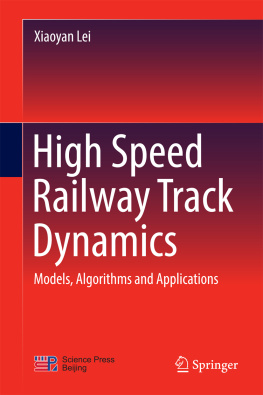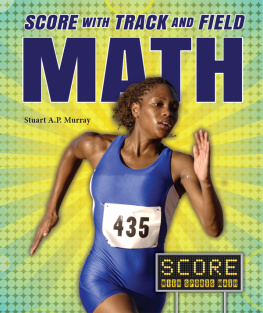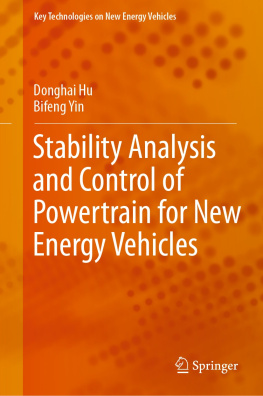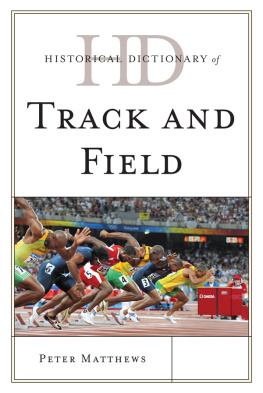With increasing train speed, axle loads, traffic density, and the wider engineering applications of new vehicles and track structures, the interaction between vehicle and track has become more complex. Accordingly, the train running safety and stability are more affected by increased dynamic stresses. Dynamic loads acted on the tracks by vehicles fall into three categories: moving axle loads, dynamic loads of fixed points, and moving dynamic loads. Axle loads, due to their moving loading points, are dynamic loads for the track-subgrade-ground system, though irrelevant to the vehicle dynamics and constant in size. As soon as the speed of moving axle loads approaches the critical velocity of the track, the track is subjected to violent vibration. Dynamic loads of fixed points come from the impacts of vehicles passing by the fixed irregularity on track, such as rail joints, the welding slag of continuously welded rail and turnout frogs. Moving dynamic loads are induced by wheel-rail contact irregularities. The dynamics analysis of the train-track system lays a good foundation for investigating the complicated wheel-rail relationship and interaction mechanism, which provides essential references for guiding and optimizing vehicle and track structure designs.
1.1 A Review of Track Dynamics Research
Up to the present, scholars both at home and abroad have achieved a wealth of research findings about the establishment of track dynamics models and numerical methods. Studies on track dynamics models have experienced a development process from simple to complex. Historically, moving loads and vehicle structures have been the earliest practical issues in structure dynamics, especially in the train-track system. Knothe and Grassie [], by modal superposition, studied the dynamic response of infinite beams over periodic bearings under moving loads.
All the above-mentioned studies have considered the track beam as the continuum and solved governing differential equations through analytical methods. Though simple, these approaches are not feasible for multi-DOF (degree of freedom) vehicle-track system, which have provided limited significance in track dynamics. In recent years, the finite element method (FEM) has been widely applied in practical engineering projects. FEM involves formulating element matrix and deriving finite element equations by discretizing the track structure into finite elements and assuming the displacement function for each element. Venancio Filho [] processed the ground into porous elastic semi-infinite domain media and studied effects of wheel-rail interaction on ground environmental vibrations when the trains were passing based on Biot porous elastic dynamics theory.
Since the early 1990s, many domestic researchers have conducted theoretical and applied researches in the field of vehicle-track coupling dynamics. Zhai Wanming published his academic paper The Vertical Model of Vehicle - track System and Its Coupling Dynamics [].
Liu et al. [], respectively, explored interaction between the vehicles and the turnouts by means of the vehicle-track coupling dynamics theory and applied their findings into dynamic analysis of rising speed turnouts in China, which can offer references for improved designs of rising speed turnouts.
As the vehicle dynamic action on the track is a random process, it may be appropriate to make random vibration analysis of vehicle-track system for comprehensively understanding of the wheel-rail interaction mechanism. Random vibration of the vehicle-track coupling is generally studied under two excitation models: fixed-point excitation model and moving-point excitation model. The former one focuses on backward movement of track irregularity excitation at a certain speed by assuming that vehicles and tracks are stationary; the latter one firstly involves reversing the track irregularity sample based on power spectrum of the track irregularity, then solving for the time domain response of the system through numerical integration method, and finally deriving the power spectrum of the system response from the Fourier transform of the time domain response by assuming that trains are moving at a certain speed on the tracks. Chen [] established a vehicle-track random vibration analysis model, and proposed the pseudo-excitation method and dual algorithm, which considered the vertical and rotational vibration effect of the vehicle with 10-DOF (degrees of freedom) and simulated the track into infinite periodic Euler beam with rails, sleepers, and ballasts. It maintains that supposing the vehicle is stationary, there might exist moving random irregularity spectrum on the track surface under the excitation of tracks, which moves at the train speed in the opposite direction.
From the above-mentioned literature review, it can be safely concluded that abundant findings have been achieved among scholars both at home and abroad in the field of track dynamics models and approaches. It should be pointed out that more related in-depth researches are under way.
1.2 Track Dynamics Research Contents
When the train moves along tracks, both of them are bound to induce vibration in all directions due to the following factors:
Locomotive dynamic power. It includes the cyclic force of the steam locomotive wheels eccentric block and the vibration of diesel locomotives power units;
Speed. When moving along irregular tracks at a certain speed, the locomotive and the train induce dynamic action;
Track irregularity. It is caused by rail surface wear, uneven foundation elasticity, failure of some sleepers, lack of rail fasteners conformance, gap between different track parts, and loose ties under the sleepers.
Rail joints and welding slag of continuously welded rail. When a train moves through the rail joints and welding slag, additional dynamic forces would be induced;
Continuous irregularity caused by eccentricity of wheel installment and impulse irregularity caused by wheel flats and uneven wheel tread wear.
The train consists of locomotive, car body, bogie, primary and secondary suspension system, and wheel sets. The train and track constitute a coupling system when the train moves along the track. The dynamic analysis of such a system chiefly covers:
Exploration of trains safety along the tracks
It is known that the train induces structural vibration when it moves along tracks. Through simulation analysis of the train and track coupling system, such parameters as dynamic stress and deflection for train and track, lateral force, derailment coefficient, and wheel load reduction rate can be derived, by which the safety of the locomotives and vehicles running on the track can be evaluated.
Exploration of trains riding quality
Riding quality of the locomotive and the passenger train is evaluated by comfortableness of engine drivers and passengers. When the train moves along tracks, the vehicle vibration frequency and acceleration and vibration amplitude should be controlled to ensure riding quality.
Evaluation of existing tracks, parameters selection, and optimization of locomotive, rolling stock unit, and track structures through theoretical analysis and experimental study. This may provide guidance for new track design.











